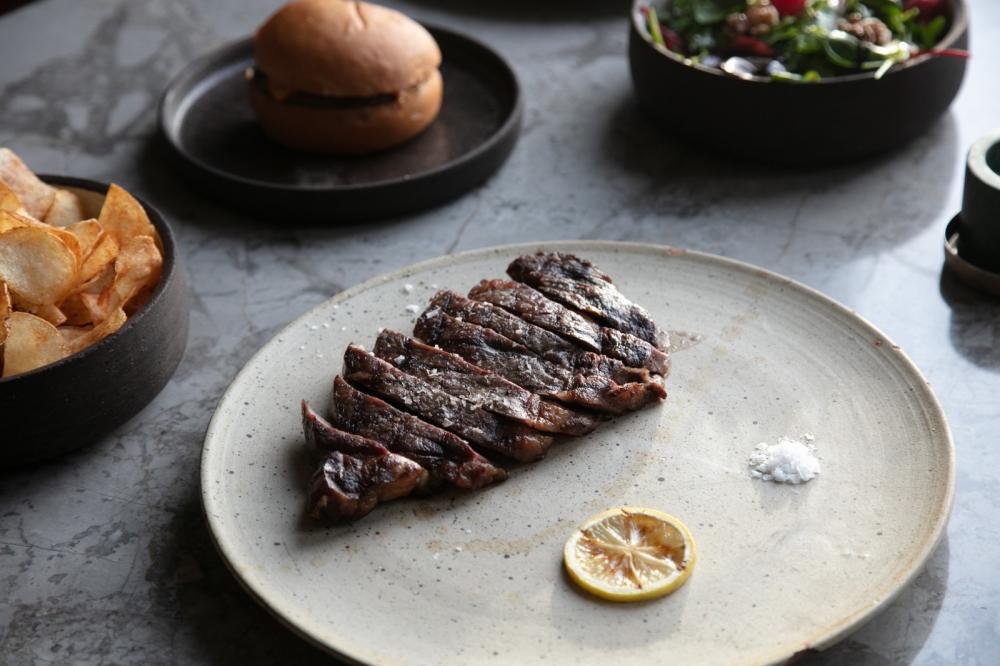Ribeye steak is one of the most popular and delicious cuts of meat favored by meat lovers worldwide, known for its rich flavor and tender texture. The cooking method for ribeye steak plays a crucial role in achieving the best results, whether you prefer it rare or well done. In this article, we'll explore the best cooking methods that ensure you get a perfect steak, along with tips and guidelines to make your kitchen experience more enjoyable and successful. Let's start our journey into the world of cooking ribeye steak!
Choosing the Meat: How to Select the Perfect Ribeye Steak
When it comes to cooking ribeye steak, choosing the right piece of meat is the first step toward success. Look for cuts that have a good amount of fat (known as "marbling"), as the fat helps enhance the steak's flavor and keep it tender during cooking. Also, ensure you choose meat from a reliable source, such as ribeye steak from Marble, where the cows are raised to maintain meat quality. Looking at color and texture also plays a significant role in determining meat quality, so choose pieces with bright red color and a smooth texture.
Preparing the Meat: Tips for Perfectly Seasoning Ribeye Steak
Seasoning ribeye steak is an essential process to bring out its natural flavor. Use a mixture of salt and black pepper as a base, then add some of your favorite herbs and spices, such as ground garlic or rosemary. You can also experiment with marinades like steak ponzu that add a unique flavor twist. Let the steak sit in the marinade for a period ranging from one hour to several hours, which helps it absorb the flavors more deeply and enhances the cooking experience. The longer you marinate, the better the results.
Cooking Methods: The Best Techniques for Cooking Ribeye Steak
There are several methods for cooking ribeye steak, each yielding different results. Among the most common methods are grilling over charcoal or gas, which gives the steak a delicious smoky flavor. You can also try pan-searing for a crispy crust. Don't forget methods like sautéing or roasting in the oven. Regardless of the method you choose, be sure to monitor the temperatures to achieve the best results every time.
Doneness: How to Determine the Ideal Doneness of the Steak
Determining the doneness of ribeye steak is one of the essential skills to master. There are five main levels: rare, medium-rare, medium, medium-well, and well done. You can use a meat thermometer to ensure you reach the optimal temperature for each type. For example, for rare steak, the temperature should be around 50-52°C (122-126°F), while medium steak needs about 65-68°C (149-155°F). Using the hand pressure test is also a great way to determine doneness without needing tools.
Necessary Tools: What You Need to Cook Ribeye Steak
To ensure a successful cooking experience for ribeye steak, you need a set of essential tools. First, make sure you have a high-quality cast-iron skillet or grill, which provides even heat. Also, use a meat thermometer to ensure you reach the desired doneness. Don’t forget to have an appropriate spatula for flipping the steak and a suitable roasting pan if you plan to cook it in the oven. All these tools contribute to improving the final meat quality and give you a more professional cooking experience.
Optimal Cooking Time: How Long Does Ribeye Steak Need?
Determining the right cooking time for ribeye steak is a crucial factor in achieving optimal results. Cooking time depends on the thickness of the cut and the desired doneness. Generally, you can cook the steak over high heat for about 4 to 6 minutes on each side to achieve medium doneness. However, if you are using thicker cuts, like filet mignon, you may need to increase the time slightly. Remember to let the steak rest for 5 to 10 minutes after cooking, as this helps distribute the juices within the meat and increases its tenderness.
Serving: How to Elegantly Present Ribeye Steak
Serving ribeye steak elegantly can make your dining experience more special. After cooking the steak, you can slice it into thick pieces and serve it on a warm plate. To add a touch of beauty, you can use fresh herbs like rosemary or parsley to garnish the dish. You can also place the steak alongside some French fries or grilled vegetables. If you're looking for an innovative way to serve it, try presenting brisket with a special sauce of your choice, giving the dish a unique and appealing character.
Pairing: Perfect Side Dishes with Ribeye Steak
When enjoying ribeye steak, side dishes are an essential part of the experience. You can choose a variety of side dishes that complement the steak's flavor, such as mashed potatoes or grilled vegetables. A refreshing green salad is an excellent choice to balance the meal. To add a special touch, you can serve some delicious ribs, like the best ribs at Marble Restaurant, as their rich flavor provides a wonderful balance with the taste of the steak.
Professional Tips: Chef Secrets for Cooking Ribeye Steak
To achieve the best results when cooking ribeye steak, here are some secrets followed by professionals. First, ensure the meat is at room temperature before cooking, as this helps achieve even cooking. Using sea salt shortly before cooking enhances the flavor. Additionally, choosing the right pan, such as a cast-iron skillet, helps achieve a crispy crust. Finally, don't forget the importance of resting after cooking, as this allows the juices to redistribute within the meat, making each bite more tender.
Storage: How to Properly Store Leftover Ribeye Steak
If you're lucky enough to have leftovers of ribeye steak, it's essential to store them correctly to maintain their flavor and texture. Place the steak in an airtight container or wrap it tightly in aluminum foil. You can store it in the refrigerator for up to 3 days. If you want to keep it longer, you can freeze it. Remember to reheat it gently when cooking again to avoid drying it out. Experimenting with serving it again with a special sauce or using it in delicious sandwiches can be great options to enjoy the leftovers.

